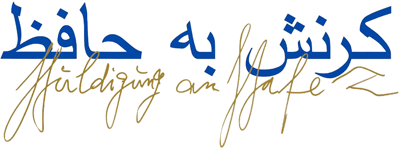Dialogue of the Arts as Contribution to
the Dialogue of Cultures
Prof. Dr. Norbert Lammert
President of the German Bundestag
Günther Uecker and language: a huge chapter of its own in the extensive and multifaceted lifework of this significant artist – not quite as striking, but not less important and almost as virtuosic as his legendary relation to nails.
“The image begins where language fails”, is the way Uecker describes his understanding of these two, apparently distant basic forms of human communication. That he explicitly does not want to elevate one artistic form of expression above another, he impressively demonstrates once more with his new work. Word and image: this pair of presumable opposites has been attracting Uecker for a long time; language and script have appealed to him over and over again, have sustainably inspired him. This goes for the contents of prominent texts as much as their form, for their massage as much as their typeface as an aesthetical challenge. Günther Uecker has repeatedly been grappling with the great documents of humanity’s civilisation history, and conveyed their message through magnificent exhibitions all over the world: the Torah, the Bible, the Quran, the UN Declaration of Human Rights. In his great, almost encyclopaedic work “Graphein” he has dealt with not less than a dozen scripts from the past millennia, and adapted them to his own artistic handwriting – from cuneiform script over the Aramaic, Hebrew, Greek, Cyrillic up to the Latin way of writing.
Also his “Homage to Hafes” is more than the amiable raving for the lyrics of the most famous Persian poet, but rather the vital need to translate his message of love, faith, human affection and mutual understanding through a dialogue of the arts as a bridge between Islamic culture and Western civilisation over the centuries into the present. Words turn into colours, the sound of poetry into written images.
Language as an artistic source of inspiration also characterises his earlier “Book of Job” that Uecker interpreted already ten years ago in one impressive volume. Both art books share not alone the model of a linguistically-dexterous text, also in terms of design elements and elementary materials they seem to correspond with each other. Also this new graphic book is not the mere illustration of great literature; Uecker rather interprets the wealth of imagery in the Persian mystic’s verses with the devices of his own art. Apart from the poetic power, another uniting element between Hafes’ ghazals and the structures and forms in Uecker’s pictures is the distinctive rhythm that forms the basis of both so effectively. In the “Book of Job” the as naive as existential human expectation that there exists a causal connection between personal good and personal deed gets brutally shattered – a subject matter twice as challenging for an artist who says of himself that he wants to make aggressions visible and aesthetically transform them. Compared with this, the rapture of love and the gushing dedication to God in Hafes’ verses appear rather untypical for the soul landscapes in Uecker’s pictures. “My entire artistic doing is a struggle for a complex human image in the process of self-recognition”, he once confessed about himself and his work. With this art book the gifted frontier commuter between religion and secular art adds another impressive facet to his oeuvre. Once more the exceptional relation between man and culture, religion and art, craftsmanship and visionary design finds expression in the work of Günther Uecker when language transforms into pictures and pictures into language: a dialogue of the arts as a contribution to the as difficult as necessary dialogue of cultures in a common world.

